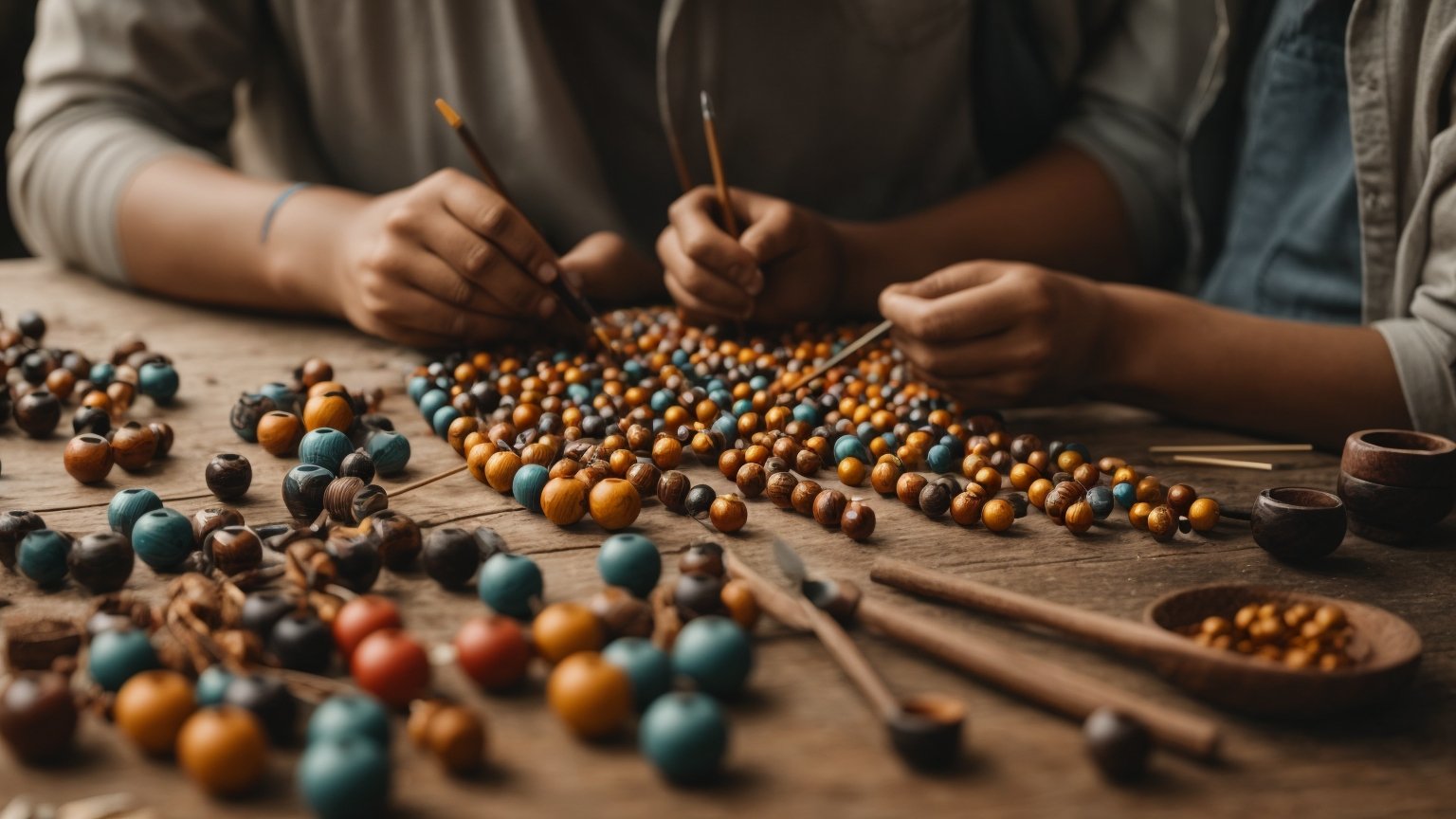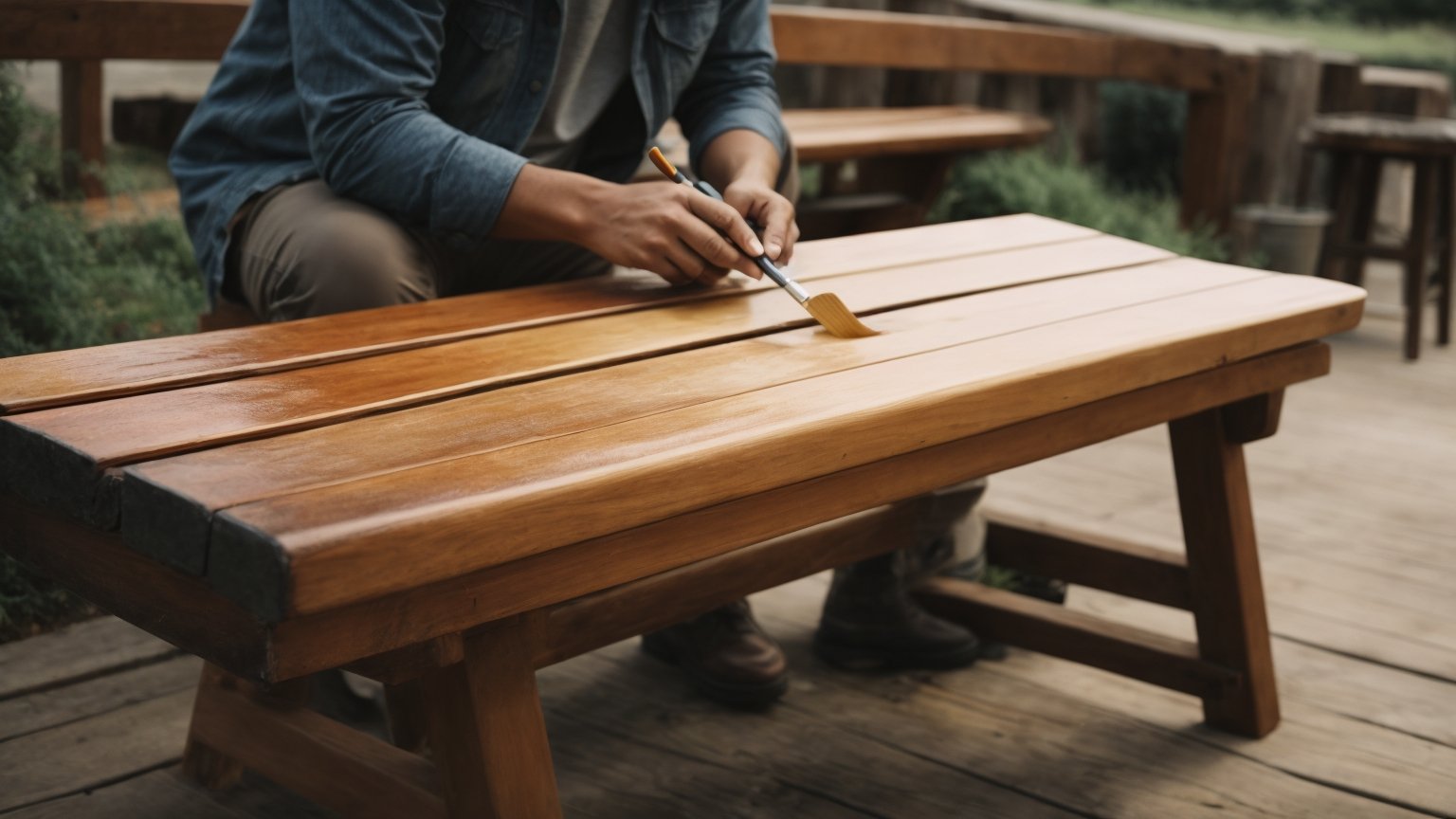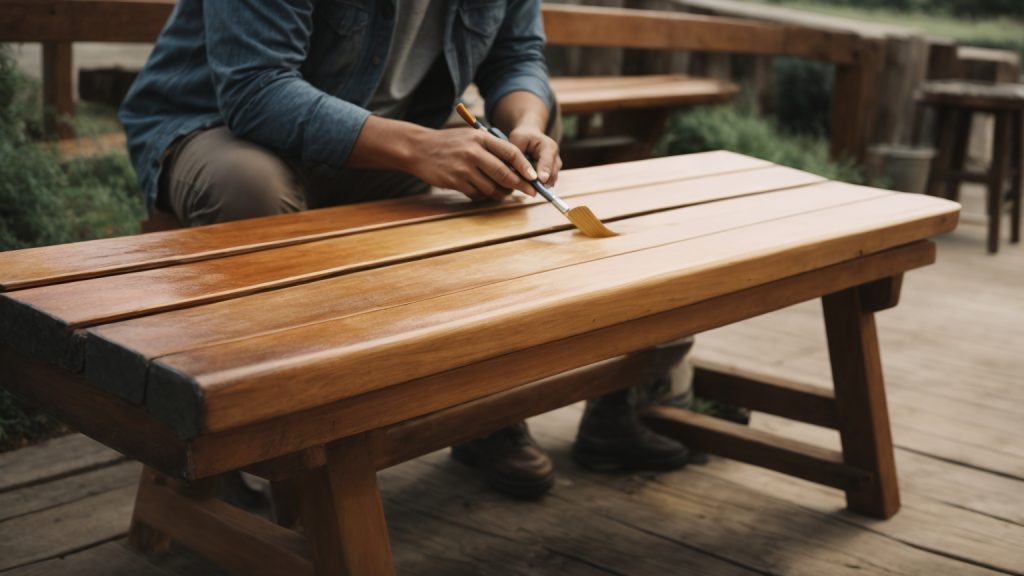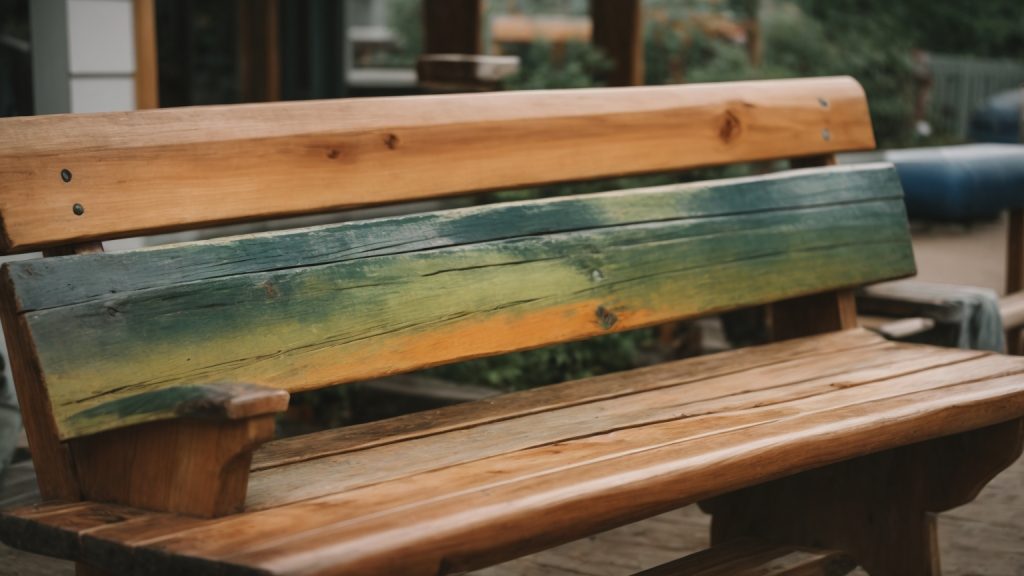If you’re looking for a fun and easy DIY project, painting wooden beads is a great option. Not only is it a relaxing activity, but it also allows you to create unique and personalized accessories for your home or wardrobe. Whether you’re a beginner or an experienced crafter, painting wooden beads can be a simple and enjoyable way to express your creativity.
To get started, you’ll need some basic supplies such as wooden beads, paint, brushes, and a skewer or toothpick. You can use any type of paint you like, including acrylic, watercolor, or spray paint, depending on your preference and the effect you want to achieve. Before you start painting, it’s a good idea to sand the wooden beads lightly to create a smooth surface for the paint to adhere to. Once you have your supplies ready, you can start experimenting with different colors, patterns, and techniques to create your own unique designs.
Understanding Wooden Beads
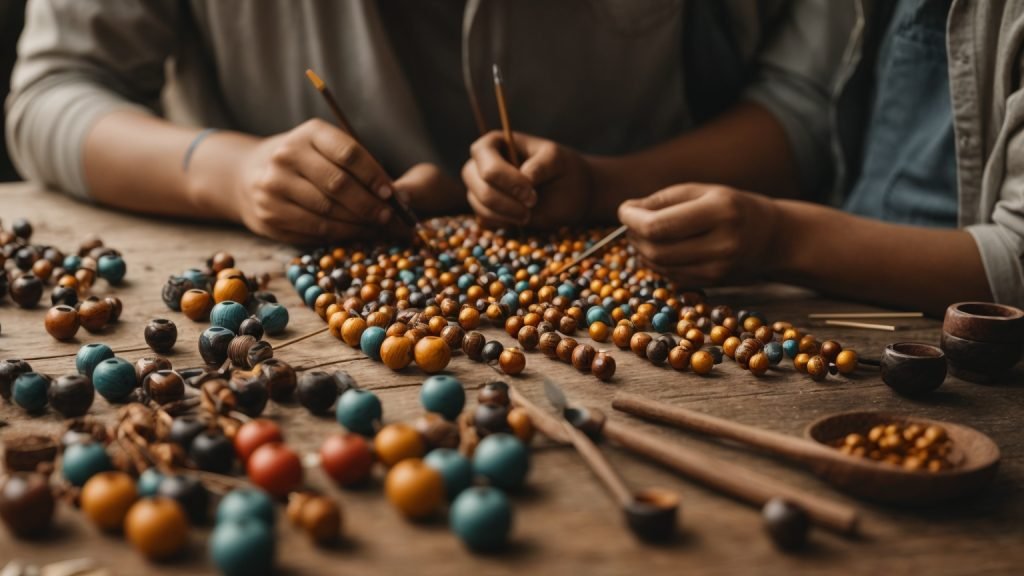
Wooden beads are a versatile and popular crafting material that can be used for a wide range of projects. They come in different shapes, sizes, and colors, and can be painted, stained, or left natural. Whether you’re a seasoned crafter or just starting out, understanding wooden beads is essential to creating beautiful and functional projects.
Types of Wooden Beads
There are several types of wooden beads available, each with its own unique characteristics. Here are some of the most common types:
- Round beads: These are the most common type of wooden beads and come in a variety of sizes and colors. They are perfect for jewelry making, home decor, and other craft projects.
- Faceted beads: These beads have flat surfaces that reflect light, creating a sparkling effect. They are often used in jewelry making and other decorative projects.
- Barrel beads: These beads have a cylindrical shape and are often used in jewelry making and home decor projects.
- Spacer beads: These beads are small and are used to separate other beads in jewelry making and other projects.
Choosing the Right Size
When choosing wooden beads for your project, size matters. Beads come in a wide range of sizes, from tiny seed beads to large statement beads. Here are some tips for choosing the right size:
- Consider the project: The size of the beads you choose will depend on the project you’re working on. For example, if you’re making a delicate necklace, you’ll want to choose smaller beads. If you’re making a statement piece, larger beads may be more appropriate.
- Think about the design: The size of the beads you choose can also impact the overall design of your project. Consider the other materials you’ll be using and choose beads that will complement them.
- Experiment: Don’t be afraid to experiment with different sizes to find the perfect fit for your project.
Painting Wooden Beads
Painting wooden beads is a great way to customize them for your project. Here are some tips for painting wooden beads:
- Choose the right paint: Acrylic paint is a good choice for painting wooden beads. It dries quickly and comes in a wide range of colors.
- Prepare the beads: Before painting, sand the beads lightly to remove any rough spots. Wipe them clean with a damp cloth and let them dry completely.
- Paint the beads: You can paint the beads with a brush or use a spray paint. Apply a thin coat of paint and let it dry completely before applying a second coat.
- Seal the beads: To protect the paint and make it last longer, seal the beads with a clear varnish.
Understanding wooden beads is the first step to creating beautiful and unique projects. With the right tools and techniques, you can create stunning jewelry, home decor, and more.
Choosing the Right Paint
When it comes to painting wooden beads, choosing the right paint is crucial to achieving the desired result. There are several types of paint to choose from, each with its own unique properties. Here are some options to consider:
Acrylic Paint
Acrylic paint is a popular choice for painting wooden beads. It is water-based, which means it dries quickly and is easy to clean up. Acrylic paint is also versatile and can be used on a variety of surfaces, including wood, plastic, and metal. When using acrylic paint, it is important to thin it with water to achieve a smooth and consistent finish. You can also mix different colors of acrylic paint to create custom shades.
Spray Paint
Spray paint is another option for painting wooden beads. It is quick and easy to apply, and it dries quickly. Spray paint is available in a variety of colors and finishes, including matte, satin, and glossy. When using spray paint, it is important to protect your work surface and wear a mask to avoid inhaling fumes. Spray paint is not recommended for intricate designs or small details.
Oil-Based Paint
Oil-based paint is a durable option for painting wooden beads. It is resistant to water and can withstand wear and tear. Oil-based paint is also available in a variety of colors and finishes, including high-gloss and semi-gloss. When using oil-based paint, it is important to work in a well-ventilated area and wear gloves to avoid skin contact. Oil-based paint takes longer to dry than other types of paint, so be sure to allow plenty of time for it to dry before handling.
No matter which type of paint you choose, be sure to read the manufacturer’s instructions carefully and follow all safety precautions. Always work in a well-ventilated area and wear protective gear as necessary. With the right paint and a little creativity, you can create beautiful and unique wooden beads that are sure to impress.
Preparation of Wooden Beads
Before painting wooden beads, it is important to properly prepare them. This will ensure that the paint adheres well to the surface and that the finished product looks smooth and professional. Here are some steps to follow when preparing wooden beads for painting:
Cleaning the Beads
The first step in preparing wooden beads for painting is to clean them. This will remove any dirt, dust, or oils that may be on the surface and prevent the paint from adhering properly. To clean the beads, you can use a soft cloth or a small brush and a mild soap solution. Be sure to rinse the beads thoroughly with water and allow them to dry completely before proceeding to the next step.
Sanding the Beads
The next step in preparing wooden beads for painting is to sand them. Sanding the beads will help to smooth out any rough spots or imperfections on the surface and create a better surface for the paint to adhere to. To sand the beads, you can use a fine-grit sandpaper or a sanding sponge. Be sure to sand the beads lightly and evenly, and wipe away any dust with a soft cloth before proceeding to the next step.
By following these simple steps, you can ensure that your wooden beads are properly prepared for painting. This will help to create a smooth and professional-looking finished product that you can be proud of.
Painting Techniques
When it comes to painting wooden beads, there are several techniques you can use to achieve the desired result. In this section, we will explore three popular painting techniques: brush painting, dipping method, and spray painting.
Brush Painting
Brush painting is a traditional and straightforward method of painting wooden beads. It involves using a paintbrush to apply paint to the surface of the beads. This technique is ideal for those who want to achieve a more precise and detailed finish.
To brush paint wooden beads, you will need a few supplies, including a paintbrush, paint, and a palette. Start by pouring a small amount of paint onto the palette. Dip the tip of the brush into the paint and apply it to the surface of the bead. Make sure to cover the entire surface of the bead evenly. Allow the paint to dry completely before applying a second coat if needed.
Dipping Method
The dipping method is another popular technique for painting wooden beads. This method involves dipping the beads into a container of paint to coat them evenly. It is a quick and easy technique that is ideal for those who want to paint a large number of beads at once.
To use the dipping method, you will need a container of paint and a pair of tongs. Start by pouring the paint into the container. Hold the beads with the tongs and dip them into the paint. Make sure to coat the entire surface of the bead evenly. Allow the paint to dry completely before handling the beads.
Spray Painting
Spray painting is a modern and popular technique for painting wooden beads. It involves using a can of spray paint to apply an even coat of paint to the surface of the beads. This technique is ideal for those who want to achieve a smooth and even finish quickly.
To spray paint wooden beads, you will need a can of spray paint and a well-ventilated area. Start by placing the beads on a piece of cardboard or newspaper. Hold the can of spray paint about 6 inches away from the beads and spray a thin coat of paint evenly over the surface of the beads. Allow the paint to dry completely before handling the beads.
In conclusion, brush painting, dipping method, and spray painting are three popular techniques for painting wooden beads. Each technique has its advantages and disadvantages, so choose the one that best suits your needs and preferences.
Drying and Sealing
Proper Drying
After painting your wooden beads, it is important to let them dry completely before handling them. The drying time will depend on the type of paint you used and the humidity levels in your environment. If you are in a rush, you can use a hair dryer on a low setting to speed up the drying process. However, be careful not to hold the hair dryer too close to the beads, or they may go flying.
To avoid any sticking, it is recommended to place the beads on a paper towel or wax paper while they dry. This will prevent any paint from transferring onto other surfaces. Once the beads are completely dry, you can move on to the next step.
Applying Sealant
To protect your painted wooden beads from wear and tear, it is a good idea to apply a sealant. There are several types of sealants available, including varnish, polyurethane, and wax. Each type of sealant has its own advantages and disadvantages, so choose the one that best suits your needs.
Before applying the sealant, make sure the beads are completely dry. Then, use a brush to apply a thin layer of sealant to each bead. Be sure to cover the entire surface of the bead, including any crevices or details.
Once you have applied the sealant, let it dry completely before handling the beads. This will ensure that the sealant has enough time to cure and provide maximum protection. Depending on the type of sealant you used, you may need to apply multiple coats for optimal protection.
By properly drying and sealing your painted wooden beads, you can ensure that they will last for years to come.
Safety Tips
When painting wooden beads, safety should always be a top priority. Here are some safety tips to keep in mind:
Using Protective Gear
It is important to wear protective gear when painting wooden beads. This includes gloves, eye protection, and a mask. Gloves will protect your hands from the paint and eye protection will protect your eyes from any paint splatters. A mask will prevent you from inhaling any harmful fumes from the paint.
Proper Ventilation
Proper ventilation is also important when painting wooden beads. Make sure you are in a well-ventilated area, preferably outdoors or in a room with open windows. This will prevent you from inhaling any fumes from the paint. If you are painting indoors, consider using a fan to help circulate the air.
Remember to always follow the manufacturer’s instructions when using paint and other materials. By taking the necessary safety precautions, you can ensure a safe and enjoyable painting experience.
Troubleshooting Common Issues
Paint Bubbling
If you notice bubbling in your painted wooden beads, it could be due to a few reasons. One possible cause is that the paint was applied too thickly, causing air bubbles to form. Another cause could be that the surface of the beads was not properly cleaned before painting, causing the paint to bubble up as it dries.
To avoid paint bubbling, make sure to clean the surface of the wooden beads before painting. Additionally, apply the paint in thin layers, allowing each layer to dry completely before applying the next. If you do notice bubbling, gently sand the affected area and repaint.
Uneven Coating
An uneven coating on your wooden beads can be frustrating, but it is a common issue that can be easily fixed. One possible cause is that the paint was not mixed well enough before application, causing the pigment to settle and create an uneven finish.
To avoid uneven coating, make sure to mix the paint thoroughly before applying it to the wooden beads. Additionally, use a brush or spray paint in a well-ventilated area to avoid drips and uneven application. If you do notice an uneven coating, lightly sand the affected area and repaint.
Remember, with a little patience and attention to detail, you can easily troubleshoot common issues when painting wooden beads.
